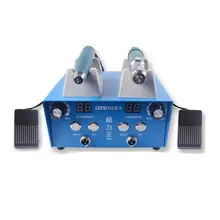Understanding Vacuum Valves
Vacuum valves are essential components in numerous systems, serving as the regulators of flow and pressure within piping networks. These valves are pivotal in applications ranging from simple household water systems to complex industrial machinery. The versatility of vacuum valves is reflected in their various types, each designed to fulfill specific roles within different environments.
Types and Applications
The landscape of vacuum valves is diverse, with each type tailored for particular scenarios. Vacuum breaker valves are commonly implemented to prevent back siphonage in water systems, safeguarding against contamination. In industrial settings, vacuum solenoid valves are often utilized for their precise control in pneumatic and hydraulic systems, responding to electrical signals for seamless operation. For systems requiring protection against overpressure, pressure vacuum relief valves are indispensable, maintaining system integrity by regulating the pressure balance.
Features and Materials
A vacuum valve's efficacy is largely determined by its construction and the materials used. Durability and compatibility with the conveyed medium are paramount. Materials range from robust metals for high-pressure environments to resilient plastics for corrosion resistance. Features such as vacuum actuators are integral in automated systems, allowing for remote or programmed operation, enhancing the system's efficiency and safety.
Advantages of Vacuum Valves
The incorporation of vacuum valves into a system offers numerous advantages. They ensure operational safety, prevent backflow, and maintain the desired flow rate. For instance, a vacuum breaker on a water heater prevents the backflow of contaminated water, while a vacuum check valve allows flow in one direction, protecting the system from reverse flow damage. The adaptability of these valves means they can be integrated into existing systems with minimal disruption, providing a cost-effective solution for flow regulation.
Selection Considerations
Choosing the right vacuum valve requires careful consideration of the system's specifications and the valve's intended function. Factors such as the operating pressure, temperature range, and fluid compatibility are critical. For applications involving fluctuating pressure conditions, a relief valve vacuum or a pressure breaker can be essential for maintaining consistent performance. In agricultural applications, a sprinkler vacuum breaker is crucial for preventing contamination of potable water sources.
Conclusion
Selecting the appropriate vacuum valve is a nuanced process that can significantly impact the efficiency and safety of a piping system. With a comprehensive understanding of the types, applications, and advantages of these valves, buyers can make informed decisions to ensure the longevity and reliability of their systems. Alibaba.com's extensive collection offers a broad spectrum of vacuum valves to meet the needs of any system, without the constraints of brand bias or promotional content.












































 浙公网安备 33010002000092号
浙公网安备 33010002000092号 浙B2-20120091-4
浙B2-20120091-4